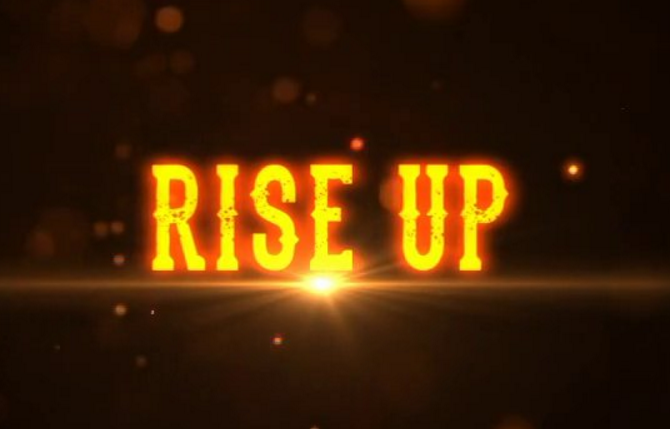 Learning how to talk to each other is a concept that’s becoming steadily more difficult thanks to the influx of a thousand different channels, many of which are designed to deliver one way communications – not conversations. Back in the day, we had to say what we thought without the veil of a 6 second timer before it disappears or the protection of saying what you think from behind a computer screen. As people spend more and more time using social media as a primary form of communication, this machismo that develops from the security blanket has contributed to an overall lack of listening. This reactive, one direction communication leaves people preparing their next comeback before you’re even done typing, anticipating what you’ll say instead of doing that whole listening thing. People used to say you have two ears and one mouth so you should listen twice as much as you talk. Now, we have 10 fingers and we can type faster than most of us can think.
Learning how to talk to each other is a concept that’s becoming steadily more difficult thanks to the influx of a thousand different channels, many of which are designed to deliver one way communications – not conversations. Back in the day, we had to say what we thought without the veil of a 6 second timer before it disappears or the protection of saying what you think from behind a computer screen. As people spend more and more time using social media as a primary form of communication, this machismo that develops from the security blanket has contributed to an overall lack of listening. This reactive, one direction communication leaves people preparing their next comeback before you’re even done typing, anticipating what you’ll say instead of doing that whole listening thing. People used to say you have two ears and one mouth so you should listen twice as much as you talk. Now, we have 10 fingers and we can type faster than most of us can think.
That has also led to a lot more passive aggressive behavior. When we listen less to what’s being said and remove context or tone, things you would get from the old communication methods like the phone are mis-interpreted far more often. I’d imagine that’s partially why the divorce rate steadily increases in correlation with social media channels and growth in their membership.
Every marriage and relationship counselor will tell you one thing: communication is key. It’s probably printed on the walls in most therapists office. Come to think of it, it’s printed on most of the walls in your HR department, assuming you’ve invested in those soul-sucking posters that are anything but motivational. However, what the poster should really say is: “If you don’t figure out this shit, you’re screwed.”
But instead of listening to the half-assed inspiration, our teams are centered on buzzword bingo vocabulary – attraction, engagement and retention. All are often touted as the most important areas for talent acquisition and talent management practitioners to focus on, but they’re starting from the wrong corner, with the wrong priority.
That’ll Make You Think:What We Know
 We’ve all gotten “the look.” The one that happens to every person in our field, when you share over drinks that you work in HR/recruiting. I’m frequently contacted by friends, relatives, acquaintances and former colleagues seeking advice on assorted work related or job search issues. Obviously, I’m always glad to help. In fact, I’m usually relieved.
We’ve all gotten “the look.” The one that happens to every person in our field, when you share over drinks that you work in HR/recruiting. I’m frequently contacted by friends, relatives, acquaintances and former colleagues seeking advice on assorted work related or job search issues. Obviously, I’m always glad to help. In fact, I’m usually relieved.
But when I can’t help? It’s endlessly frustrating. Working in this field long enough, I know few recommended resolutions are straight-forward. Most are anything but. In fact, empathizing and listening occasionally ends up being the only pragmatic choice as some problems are too messy for a clean solution. It frustrates me when I encounter those types of no-win scenarios. I wish I could do or say more than serve as a venting vestibule, but sometimes reality is beyond repair.
Sure there are plenty of laws intended to ensure “fair” employment practices, but it’s 100% legal to be an a-hole. And, judging by abundant evidence provided by both my internal and external conversations with others (not to mention millions more posted on the Internet), there’s no shortage of bad behavior. Every single day we hear about and witness lousy treatment of members of the workforce beginning with the pre-hire candidate experience phase all the way through the employee departure steps. These interactions aren’t hard, but certain people operate in ways that suggests they have no idea how to demonstrate professionalism or common courtesy.
Whether or not you’ve been fortunate enough to have only satisfying career experiences, it is highly likely that someone you know has been confronted with uncivilized conduct in the workplace. Perhaps you know someone like my friend Elizabeth who sought my direction about her story…
That’s Program, And It’s Easy: Where Things Go Wrong
 “So here’s what happened,” she said as soon as I sat down for dinner. You know it’s going to be a legendary hiring tale when the other person can’t even wait until you’ve sat down to start.
“So here’s what happened,” she said as soon as I sat down for dinner. You know it’s going to be a legendary hiring tale when the other person can’t even wait until you’ve sat down to start.
Elizabeth works at a company that’s growing really quickly. If you’ve ever worked at a company in hyper-growth, you’ll know that thanks again to social media and one way communication, they suck at communication. But she explains that she has always gotten stellar reviews and feedback. Then, her boss Francine, resigned. A replacement, Angela, was hired. Prior to Angela starting, Francine informed Elizabeth that not only is Angela replacing Francine, but Angela also happens to be “an expert” in Elizabeth’s functional area.
Are your red alarms going off too? That one that says “uh-oh. Redundancy alert.” I can feel myself doing the nod because I can sniff this one out. Elizabeth starts feeling like maybe she’s on the chopping block; she’s not stupid. You don’t have to work in the field to sniff a bad situation out.
Work slowly starts to disappear, to no one’s surprise. No one says a word about that work disappearing. An unfortunate, but consistent, lack of surprise around that subject too. The passive aggressiveness that came up next was pretty standard too, as her boss repeatedly said “everything’s all taken care of” when Elizabeth asked about new projects. The boss isn’t responding to e-mail, now. Colleagues including company leaders that would normally exchange greetings or chit chat a bit weren’t even making eye contact Other coworkers seemed to react a bit surprised when they saw her, as if they weren’t expecting her to be around. Then, she found her things piled in a corner. The new boss was taking her office. No one said anything about the move or where Elizabeth was supposed to sit. Ominous music is now playing in my head.
Finally, after another week or so passed, Angela sent Elizabeth an email requesting a variety of reference documents and procedural information about what she does and how she does it. She asked Elizabeth to take care of a few low level clerical tasks, as well as a meeting to discuss all of that. Aside from a brief introduction on Angela’s first day weeks earlier, this would be the first face-to-face conversation between them.
The boss rescheduled a few times that day but finally, and reluctantly, they met. Angela informed Elizabeth that she is now overseeing and personally handling all of Elizabeth’s “department’s” work and was doubtful that it required more than one person to do so. Elizabeth agreed that it didn’t. But then, something surprising happened. Something I didn’t expect.
Elizabeth brought Angela up to speed on everything she’d been handling. And, instead of firing her, Elizabeth went along with Angela’s vague concept of the two of them “partnering” on things and confirmed her availability to help. But partnering really meant, “you’ll be doing the boring stuff,” even after Elizabeth asserted her desire to add value and willingness to do whatever is needed as long as she’s needed there.
Either way, everything was extremely awkward!
Come On and Do It…: Communication Time
 Because of how Angela phrased certain comments and questions, Elizabeth got the impression that the company seemed to expect her to simply resign, rather than them “letting her go” because she was no longer needed. Or perhaps they intended to pave a convoluted enough path to fabricate firing justification. There’d been a history of executive leaders having an “if you don’t like it, leave” attitude when they wanted to get rid of someone. What that translated into was enforcing restrictions, reductions and expectations no one would like, then rapidly terminate an employee for performance infractions never addressed before.
Because of how Angela phrased certain comments and questions, Elizabeth got the impression that the company seemed to expect her to simply resign, rather than them “letting her go” because she was no longer needed. Or perhaps they intended to pave a convoluted enough path to fabricate firing justification. There’d been a history of executive leaders having an “if you don’t like it, leave” attitude when they wanted to get rid of someone. What that translated into was enforcing restrictions, reductions and expectations no one would like, then rapidly terminate an employee for performance infractions never addressed before.
That’s crappy, lame, a hundred other words I won’t say now. Regardless of the reason, there are dignified and respectful ways to manage the employment termination process. And they all start with communication. Those choices and the consequences of quitting suck and it’s unfair for Elizabeth to endure that predicament. It’s clear to me that she needs to find a new job, but that takes time.
But saying that to her eyes that say “help!” feels a little shallow and unsatisfying to me. Who I really want to talk to is the company. Ask about how they self reflect, unprofessionalism, and communication – most importantly. Why insist on pushing people to the edge instead of letting them go in a humane way? I can’t think of any rational reason other than they must be a-holes. The unfortunate answer here is money, of course, but that’s not a good enough answer for me.
If you’ve made it this far, you’re probably thinking,- yep, it sucks to be Elizabeth. Ultimately, this job is ending one way or another so her immediate pain is only temporary. The unfortunate truth is… the indefinite career ramifications will remain in the form of going from underemployed to unemployed. Not only will Elizabeth have a fresh employment gap to explain, but there’s not much she can say about this sequence of events that won’t be met with suspicion or skepticism, by you and people like you.
Of course there are countless examples of far more egregious and damaging a-hole assaults (literally and figuratively) than this story. That’s the point. And THAT’S the PROBLEM. Instead of concocting new programs and processes and pretending the latest flavor-of-month tech tool or tip will be just the trick we need, we need to use better communication to undo some of the injustice happening to people who are “managed out.” We need to pacify passive aggressive behavior and shut it down at the door.
About the Author: Leveraging her unique perspective as a progressive thinker with a well-rounded background from diverse corporate settings, Kelly Blokdijk advises members of the business community on targeted human resource, recruiting and organization development initiatives to enhance talent management, talent acquisition, corporate communications and employee engagement programs.
Kelly is an active HR and recruiting industry blogger and regular contributor on RecruitingBlogs.com. She also candidly shares opinions, observations and ideas as a member of RecruitingBlogs’ Editorial Advisory Board.
Follow Kelly on Twitter @TalentTalks or connect with her on LinkedIn.




 Niche recruiting is nuanced, to say the least, I’ve gotten a good laugh with people who tell me healthcare recruiting is the same as recruiting for any other field more than a few times. From the outside looking in, it might seem like any other kind of recruiting, but there are some surprising nuances.
Niche recruiting is nuanced, to say the least, I’ve gotten a good laugh with people who tell me healthcare recruiting is the same as recruiting for any other field more than a few times. From the outside looking in, it might seem like any other kind of recruiting, but there are some surprising nuances.
 Throwback Every Day: I found that going through old requisitions to see who we hired for past positions was also a valuable resource because I could pull keywords from those resumes to build my searches. In fact, I created and presented an entire training for Talent Acquisition at my company so all our recruiters could learn how to source in Taleo. It’s now one of our primary methods of finding talent!
Throwback Every Day: I found that going through old requisitions to see who we hired for past positions was also a valuable resource because I could pull keywords from those resumes to build my searches. In fact, I created and presented an entire training for Talent Acquisition at my company so all our recruiters could learn how to source in Taleo. It’s now one of our primary methods of finding talent! Terry Hall is a Senior Recruiter at Providence Health & Services, which is headquartered in the Seattle-Metro area. Terry is a Marine Corps Veteran and has over a decade of recruiting experience, starting her career in agency recruiting running a desk for Select Personnel and Manpower Professional Finance before making the move in-house, where she has held strategic talent roles for Washington Mutual Corporate Human Resources, Amazon, and T-Mobile.
Terry Hall is a Senior Recruiter at Providence Health & Services, which is headquartered in the Seattle-Metro area. Terry is a Marine Corps Veteran and has over a decade of recruiting experience, starting her career in agency recruiting running a desk for Select Personnel and Manpower Professional Finance before making the move in-house, where she has held strategic talent roles for Washington Mutual Corporate Human Resources, Amazon, and T-Mobile.















 About the Author: Derek Zeller draws from over 16 years in the recruiting industry. The last 11 years he has been involved with federal government recruiting specializing within the cleared Intel space under OFCCP compliance. He is currently serves as Technical Recruiting Lead at Comscore.
About the Author: Derek Zeller draws from over 16 years in the recruiting industry. The last 11 years he has been involved with federal government recruiting specializing within the cleared Intel space under OFCCP compliance. He is currently serves as Technical Recruiting Lead at Comscore.











 About the Author: Pete Radloff has 15 years of recruiting experience in both agency and corporate environments, and has worked with such companies as Comscore, exaqueo, National Public Radio and Living Social.
About the Author: Pete Radloff has 15 years of recruiting experience in both agency and corporate environments, and has worked with such companies as Comscore, exaqueo, National Public Radio and Living Social.



 Mike Wolford has over 9 years of recruiting experience in staffing agency, contract and in house corporate environments. He has worked with such companies as Allstate, Capital One, and National Public Radio.
Mike Wolford has over 9 years of recruiting experience in staffing agency, contract and in house corporate environments. He has worked with such companies as Allstate, Capital One, and National Public Radio.






 With so many
With so many 






 “Free” sites can actually cost you. Ever notice how in several articles I said, “
“Free” sites can actually cost you. Ever notice how in several articles I said, “
 Jobinventory
Jobinventory Bullhorn Reach
Bullhorn Reach